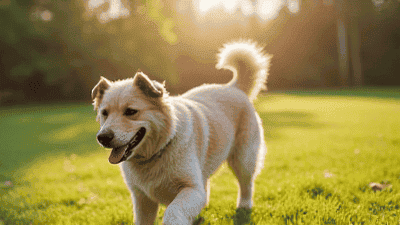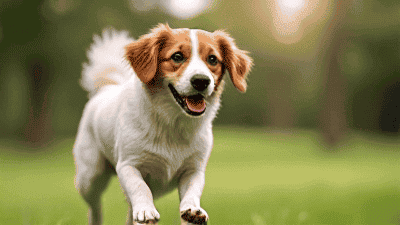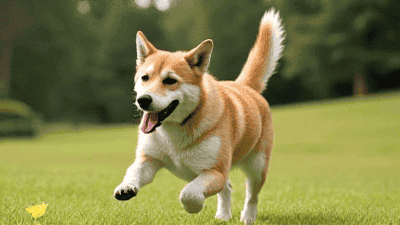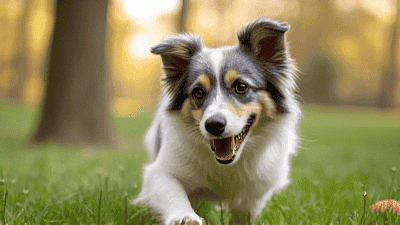
Regular exercise is just as important for pets as it is for humans. It not only helps maintain their physical health but also improves their mental well-being, strengthens the bond between pets and their owners, and prevents behavioral issues caused by boredom or excess energy. Whether you have a playful puppy, a senior dog, a curious cat, or a small animal, incorporating regular exercise into their routine is essential for a happy and healthy life.
Exercising with your pet is a great way to spend quality time together, build trust, and strengthen your relationship. Whether it’s going for a walk, playing fetch, or trying a new activity, shared physical activity fosters a deeper connection.

Fetch is a classic game that provides both physical and mental stimulation. Use a ball or toy to encourage your puppy to run and retrieve.
This game helps build strength and satisfies your puppy’s natural instinct to tug. Use a sturdy rope toy and ensure you teach them to release the toy on command.
Set up a mini obstacle course in your backyard or living room using cones, tunnels, and jumps. Agility training is a fun way to improve coordination and focus.
Take your puppy on walks to explore new environments and meet other dogs. Socialization is crucial for their development and helps them become well-adjusted adults.
Use puzzle toys or treat-dispensing balls to keep your puppy entertained while exercising their mind and body.
Regular walks or runs are the foundation of a healthy exercise routine. Adjust the intensity and duration based on your dog’s breed and energy level.
Take your dog on a nature hike to explore new trails and enjoy the outdoors. Hiking provides both physical and mental stimulation.
Swimming is an excellent low-impact exercise for dogs, especially those with joint issues. Always supervise your pet and ensure they’re comfortable in the water.
Engage your dog in sports like flyball, disc dog, or dock diving. These activities are great for high-energy breeds and provide a fun way to bond.
Arrange playdates with other dogs to let your pet socialize and burn off energy in a safe, supervised environment.

Opt for shorter, slower walks to accommodate your senior pet’s reduced stamina and joint health. Use a harness to provide extra support.
Gentle stretching and massage can improve flexibility and circulation in older pets. Consult your vet for guidance on safe techniques.
Swimming or walking on soft surfaces like grass or sand can be easier on your senior pet’s joints.
Use puzzle toys or treat-dispensing games to keep your senior pet mentally engaged without overexerting them.
Pay attention to signs of pain or fatigue during exercise. Adjust the intensity or duration as needed and consult your vet if you notice any issues.
Use a laser pointer to encourage your cat to chase and pounce. This is a great way to provide exercise for indoor cats.
Feather wands or toys that mimic prey can stimulate your cat’s hunting instincts and keep them active.
Invest in a cat tree or climbing shelves to give your cat opportunities to climb, jump, and explore.
Automatic toys or treat-dispensing puzzles can keep your cat entertained and engaged while providing physical activity.
Teach your cat tricks like high-fives or fetch. Training provides mental stimulation and strengthens your bond.

Provide an exercise wheel or ball for your small rodent to run in. Ensure the wheel is solid to prevent injuries.
Set up a playpen or safe outdoor area for your rabbit or guinea pig to explore. Offer tunnels, ramps, and toys for added fun.
Encourage your bird to fly by providing ample space and perches. Use toys and foraging activities to keep them active and engaged.
While fish don’t require traditional exercise, ensure their tank is large enough for swimming and includes decorations to encourage movement.
If your pet is new to exercise, start with short sessions and gradually increase the duration and intensity.
Consider your pet’s breed, age, health, and energy level when choosing activities. Not all pets enjoy the same type of exercise.
Choose activities that both you and your pet enjoy. A positive experience will encourage regular participation.
Stick to a regular exercise schedule to establish a routine that your pet can rely on.
Watch for signs of fatigue, dehydration, or discomfort during exercise. Provide water breaks and adjust activities as needed.
A healthy diet provides the energy your pet needs for physical activity. Consult your vet to ensure your pet is getting the right nutrients.
Always provide fresh water before, during, and after exercise to prevent dehydration.
Use healthy treats as rewards during training or exercise, but avoid overfeeding to maintain a healthy weight.
If you have a busy lifestyle, consider hiring a dog walker or using pet daycare services to ensure your pet gets enough exercise.
For apartment dwellers, indoor games, short walks, or visits to a nearby park can provide adequate exercise.
If your pet has health concerns, consult your vet for safe exercise recommendations and modifications.
Regular exercise is a cornerstone of your pet’s overall health and happiness. From puppies to senior pets, every age and species can benefit from physical activity tailored to their needs. Whether it’s a daily walk, a game of fetch, or an agility course, incorporating exercise into your pet’s routine strengthens their body, stimulates their mind, and deepens your bond. By understanding your pet’s unique needs and making exercise a fun and consistent part of their life, you can ensure they live a long, healthy, and fulfilling life.